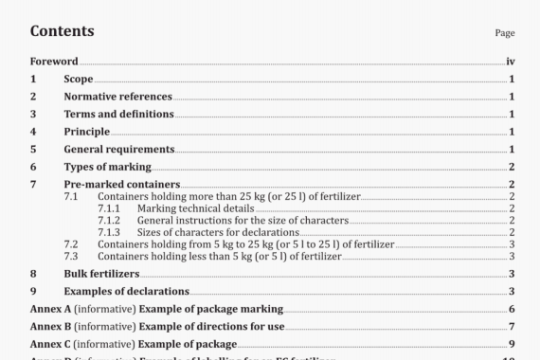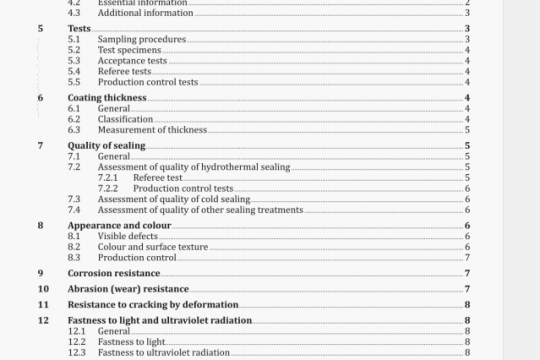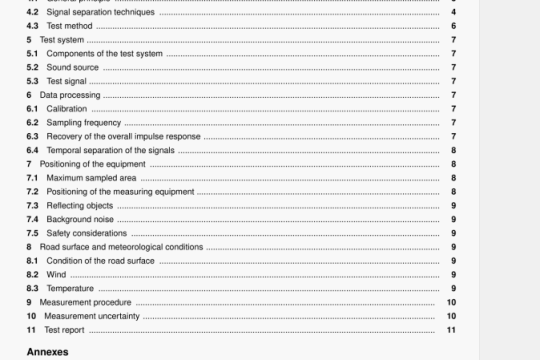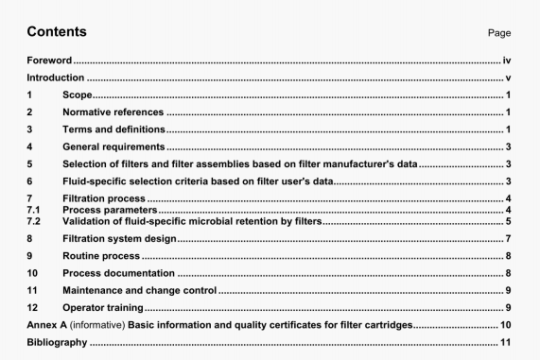ISO 18904:2000 pdf download
ISO 18904:2000 pdf download.Imaging materials- Processed films 一Method for determining lubrication.
The surface of the inclined plane shall be smooth, hard, and not deformable under the test conditions.
It shall be narrow and high enough to accommodate the legs of the slider and be provided with clips at each end to hold the film flat. The clips shall have rounded edges and smooth undersides to avoid damage to the film. The pressure exerted by the clips shall be not greater than that required to secure the film.
— It shall be capable of being raised and lowered with a minimum of resistance, and there shall be a means provided to clamp the plane firmly at the desired angle.
The equipment shall be calibrated to read in terms of the tangent of the angle of inclination in units of 0,05 up to a value of at least 0,50. This equates mathematically to a coefficient of friction.
Any suitable material may be used to construct the inclined plane. Acrylic plastic has been found to be suitable.
4 Sample preparation
The dimensions of samples are not critical, provided that the sample may be held firmly by means of the securing clips and not impede the movement of the friction slider. Samples should be about 150 mm in length and from several millimetres to 35 mm in width. Roll-film samples need not be detached from the balance of the roll.
Care should be exercised not to contaminate the test area with substances that have a lubricating effect, for example, grease from finger marks, residues from cotton gloves, etc. For this reason, the outermost convolutions of roll films shall not be used as the test sample.
5 Test conditions
The standard relative humidity for testing shall be between 30 % and 55 %. These tolerances are acceptable since the paper clip friction coefficient is not sensitive to humidity in this range.
The standard temperature for testing shall be 20 °C ± 5 °C.
Samples shall be conditioned at the test conditions prior to testing. Since this test involves a surface property, a relatively short conditioning time of 2 h is sufficient.
6 Procedure
Place the test rig (3.2) on a stable, smooth, horizontal surface. Confirm that the base of the test rig is level and adjust it if necessary.
NOTE Use may be made of a spirit level. Alternatively, the apparatus may be checked by obtaining a measurement on one film sample, then turning the apparatus through 180° and repeating the test. If the two results do not agree to within 10 %, the apparatus is not horizontal.
Secure the film sample in place on the inclined plane by means of the clips.
Raise the plane to any arbitrary angle. (Using the models detailed in Figures 1 and 2 and illustrated in Figure 3, this might best be done by the left thumb and forefinger while holding the base down with the other hand.)
Place the friction slider (3.1) on the film with a slight sliding motion. It is essential that the operator be prepared to grasp it again quickly at the end of its travel in case it slides rapidly. It is very important that some sliding motion be imparted at the start of each individual trial. Experience with lubricated and unlubricated film in this procedure will provide the operator with a facility for this requirement. If it continues to slide, lower the plane slightly and repeat the test. If it does not slide freely, raise the plane slightly and repeat the test. Repeat this operation until a minimum angle is found to the precision desired, at which point the slider will just sustain the initial motion imparted to it. Read the tangent of this angle from a scale attached to the inclined plane. This is the paper-clip friction coefficient.




